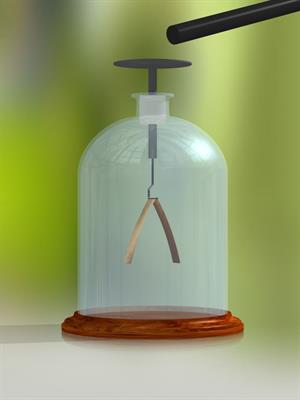
PUMPA - SMART LEARNING
எங்கள் ஆசிரியர்களுடன் 1-ஆன்-1 ஆலோசனை நேரத்தைப் பெறுங்கள். டாப்பர் ஆவதற்கு நாங்கள் பயிற்சி அளிப்போம்
Book Free Demo- Consider having two metallic spheres, one has more negative charge (excess of electrons), and the other has more positive charge (deficiency of electrons).
- When you connect them both externally with the help of a metallic conductor or wire, excess electrons from the negatively charged sphere will begin flowing towards the positively charged sphere. This flow of electrons continues till the number of electrons in both the sphere becomes equal.
- In this case, the positively charged sphere is supposed to be at higher potential, and the negatively charged sphere is supposed to be at lower potential. Therefore, electrons flow from a lower potential to a higher potential. This flow of electrons from lower potential to higher potential constitutes electric current in the circuit.
- The difference between these two potentials is known as the potential difference, commonly known as voltage.
- Before the identification of electrons, it was considered that electric current was due to the flow of positive charges. The flow of positive charge in a circuit is called conventional current.

The above image shows the flow of charges from higher potential to lower potential
Conventional current
Conventional current is assumed to flow from higher potential to lower potential. The flow of positive charge in a circuit is called conventional current.
Is there any instrument to detect the presence of charge on a body?
Yes, we have an instrument called an electroscope to detect the presence of charge on a body.
Yes, we have an instrument called an electroscope to detect the presence of charge on a body.
Electroscope:
An electroscope is a scientific instrument used to detect the presence of electric charge on a body. In the year 1600, British scientist William Gilbert invented the first electroscope. It is the first electrical instrument.
There are two types of electroscopes:
- Pith-ball electroscope
- Gold leaf electroscope
An electroscope is made up of conducting materials, commonly metals. It works on the principle that like charges oppose each other. In a simple electroscope, two metal sheets are attached in contact with each other. They are attached to a metal conductor that extends upwards and ends in a knob at the end. If you bring a charged body near the knob, electrons will either move out of it or into it. This movement results in the accumulation of charges on the metal leaves inside the electroscope. If a negatively charged body is brought near the top knob of the electroscope, it causes free electrons to move down into the leaves, leaving the upper portion positive. Since both the leaves have a negative charge, they oppose each other and move apart.

Sample model of electroscope
If a positive body is brought near the top knob of the electroscope, the electroscope's free electrons start to move up towards the knob. This shows that the bottom has a net positive charge, leading to the leaves spread again.